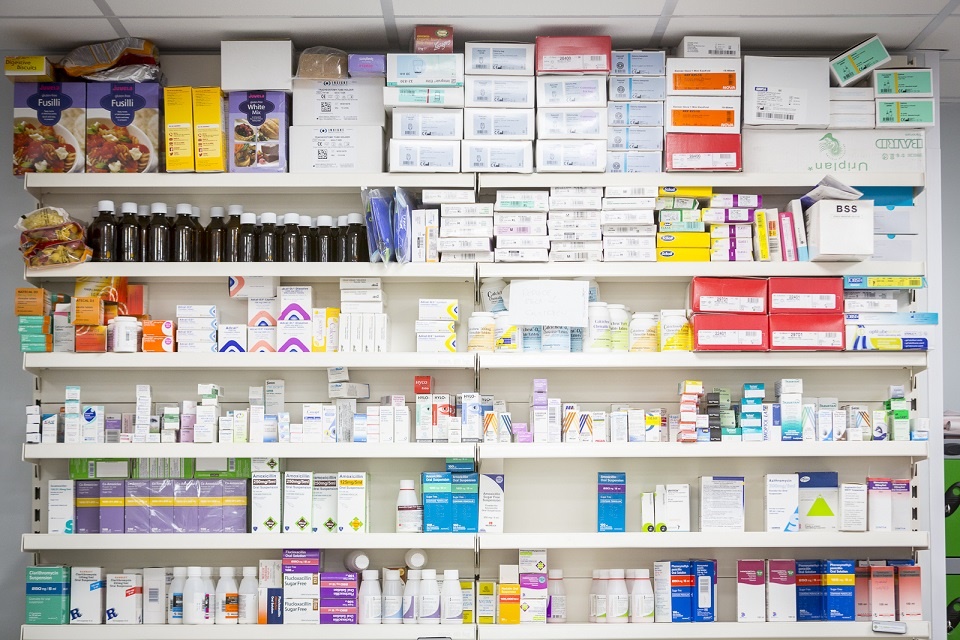02.08.19
Framework for efficiencies through the Long Term Plan
Featured in July/August issue of NHE
James Roach, programme director at West Essex Integrated Care Partnership, takes a closer look at over-the-counter medicines, Victorian era healthcare and how to deliver efficiencies through the Long Term Plan.
It could be argued that, following the publication in November 2017 of NHS England’s 'Items which should not be routinely prescribed in primary care: Consultation report of findings', a lot has changed.
The national consultation behind the report has given clinical commissioning groups (CCGs) licence to increase the speed of their retreat from prescribing non-prescription drugs and move towards over-the-counter medicines (OTC) for identified conditions. Getting people to recognise and acknowledge the NHS’s finite resources, and change their behaviour as ‘consumers’ accordingly, is gaining traction. Back in 2017, NHS England’s report showed the extent to which participants agreed with the proposals to restrict the prescribing of OTC medicines, with 50% of members of the public agreeing overall.
Looking back to a time before the NHS, the Victorian era offers an interesting insight on the public perspective of purchasing OTC medicine. Poverty was high, illness stalked the very young to the very old, and public health schemes were nascent. Getting the services of a doctor came at a price, and all too often a price that was not affordable to the many. However, seeing a ‘chemist’ was free and most Victorians got their medicines over the counter.
READ MORE: New consultation launched on guidance for over-the-counter medicines
READ MORE: Call for greater access to over-the-counter medicines to relieve pressures on NHS
Nobody would advocate a return to the conditions or system of healthcare that existed pre-1948, but the common thread is affordability. The NHS provides a free at the point of use health care system, but affordability is still a central issue and the demands of sustaining the NHS is significant. In 2018, 1.1 billion prescription items were dispensed in the community. An increase of 0.3% (2.9 million) in 2017 put the total cost to the NHS at just under £9bn. Each year, around £600m is spent on prescriptions for medicines which could be purchased over the counter from a pharmacy and other outlets such as supermarkets.
Clinical commissioners are forging initiatives to reduce this spend and time-burden and are engaging with their communities to do so in the most appropriate ways. The Long Term Plan (LTP) offers commissioners and communities the headroom to further improve this area of unnecessary cost. Its pledge is to ‘reduce the prescribing of low clinical value medicines and items which are readily available over the counter to save over £200m a year.’

James Roach, programme director at West Essex Integrated Care Partnership
Just as the Voluntary Scheme for Branded Medicines Pricing and Access will allow best-value drugs to be fast tracked through the approval process and provide up to £1bn in savings, the increasing place of OTC in the marketplace continues to grow. Pain relief remains the highest value category group, however, gastro and eye care products have seen one of the largest increases.
The LTP aims to bring down the walls between primary care and community health. This is supported by a population-based approach in primary care and the creation of Primary Care Networks (PCNs). The new landscape, underwritten by £4.5bn of new investment for expanded community multidisciplinary teams, aligned with new PCNs of neighbouring GP practices, will cover populations of between 30-50,000 people.
A significant change within the PCN model is the increase for clinical pharmacists in primary care. Seeing patients face to face and reducing polypharmacy will be key to improving outcomes and reducing admissions from adverse events, and it will also help shape the outlook on reducing the prescribing of OTC medicines.
READ MORE: Healthwatch: Long-term plan is just the start
READ MORE: Long-term plan: moving on up
Whilst the Long Term Plan doesn’t pretend to solve all the challenges in primary care, it does at the least offer a framework within which efficiencies and innovations can be managed that, in turn, operate on supply and demand.
Shifting up the gears in the reduction of demand requires a concerted effort across all stakeholders - commissioners, clinicians, communities and industry – to engage with the public on the concept of ‘shared responsibility.’ Historically, the NHS outlook on patients taking a greater share in health care has focused on getting them to stop doing something. That is not sharing, that is just didactism. Creating behavioural change cannot be achieved by impediment, however, and making a lasting difference can be secured by enabling people to design their way toward a new behaviour.
The new PCNs are incentivised by a shared savings scheme, and this needs to bring a dividend for patients too, a benefit which at least represents an improvement in service experience. Much work already takes place among commissioners and providers, and information campaigns are common. However, a poster in a GP’s waiting room or a flurry of digital messages will not secure enduring involvement with, and participation in, co-owned change. Relationships are the key; the networked gearing in the new primary care model provides opportunities for the very players with whom pharma already has the relationships.

The NHS wants to increase the speed of their move away from prescribing non-prescription drugs and move towards over-the-counter medicines (OTC) for identified conditions.
It is clear the LTP intends to free up both time and resources; time to be spent looking after the patients with the greatest need and resources reinvested in innovation and the transformation of services. Supporting the system means getting closer to the people and sharing in the relationship between clinician and patient.
A challenge in managing the transition from proven prescription drugs, Rx, to OTC has been the dilemma faced by GPs in managing patient expectations. A disgruntled patient who can no longer get a prescription for an OTC medicine takes up valuable consulting time (an average GP consultation is between 12 and 15 minutes) and can impact on the doctor-patient relationship. Similarly, a pharmacist’s advice on the right OTC medicine will be ignored if a prescription opportunity still exists. Working age adults with self-limiting symptoms will not make the right choice unless they are supported with time and information. The door for pharma is half-open, and helping to support dialogue with patients supports the LTP.
The LTP may be an exercise in shifting scale. There are examples of an upward shift of architectural scale with the merging of CCGs, the increase in integrated care systems and the building of primary care networks. Equally, there is a downward shift in population-based health that commissions care ‘closer to home.’ This supports the ambitions for innovation and transformation, with increased self-care and management and a long-term effort to reduce the cost of unnecessary or limited efficacy provision.